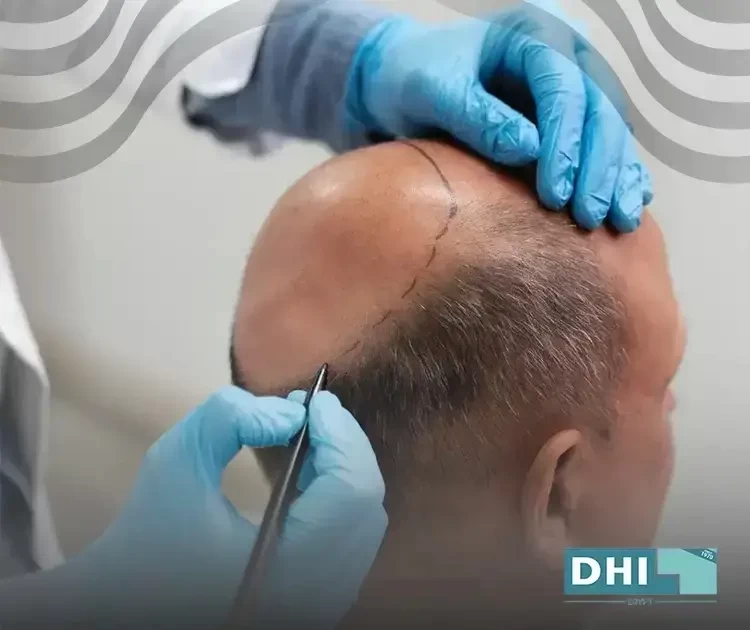People often choose to undergo hair restoration surgery because they desire a fuller, more natural-looking hairstyle. The road to successful hair transplants, however, is not without its difficulties, prompting the question, "Why hair transplant fail?"
In exploring the common factors contributing to hair transplant failures, we delve into the significance of post-operative care, donor graft selection, and the optimal age for undergoing the procedure. Join us as we investigate the crucial question, "Why hair transplant fail?"
Hair transplantation success rate
According to a report in 2021, 703,000 hair transplant procedures were performed worldwide, illustrating the long-term benefits of this transformative solution. Technological developments have made hair transplants more successful, guaranteeing their continued popularity.
90% of transplanted hair grafts are thought to be highly successful, highlighting the amazing results that can be attained in this fast-growing field. The survival of these grafts is crucial to success.
What is the hair transplant failure rate?
According to an ISHRS study, the hair transplant failure that does not meet expectations is approximately 43%. This study assesses failure in terms of patient satisfaction and the achievement of expected outcomes. True failure occurs when the transplanted hair fails to grow.
So, Why hair transplant fail?
Why hair transplant fail?
Despite the relatively high success rate of hair transplants, there is still a significant risk of failure. Understanding the possible causes of a failed hair transplant can help you make more informed decisions throughout your hair restoration journey.
Various factors, such as graft rejection, eligibility for a hair transplant, unrealistic expectations, inadequate post-transplant care, and other factors, can contribute to the failure of hair transplants.
Inexperienced Surgeon
Not all hair transplant surgeons are skilled at successfully completing all types of hair transplants. For example, many surgeons may only be proficient in the FUE technique and may encounter difficulties when performing transplants with advanced techniques such as DHI.
Graft rejection
Rejected hair implants result in a failed hair transplant procedure and unsatisfactory results. This condition has been linked to a disease known as Lichen planopilaris (LLP), which can result in graft rejection. This disease causes inflammation in the upper regions of the hair follicle, causing scar tissue to replace the hair follicles.
Unrealistic expectations
Manage expectations by openly communicating your goals with your surgeon to avoid unrealistic expectations, especially regarding factors like donor grafts, which can impact the outcome of a hair transplant.
Ineligibility for a hair transplant
Key factors for a successful hair transplant:
-
Healthy and suitable donor area.
-
Age below 65 (may vary).
-
Absence of blood-borne illnesses.
-
It is recommended to wait until around the age of 22 to assess hair loss progression.
Getting a transplant too early in the pattern baldness stages may result in future bald patches. Also, underqualified donor grafts or grafts from different body areas may lead to reduced viability and shedding.
Inadequate post-hair transplant care
Post-operation care is a critical aspect of ensuring the success of a hair transplant, even with a skilled surgeon. Neglecting proper care can have a negative impact on the outcome.
These are the reasons "Why hair transplant fail"... and now we will talk about how to avoid hair transplant failure.
Tips for avoiding hair transplant failure
Patients need to actively participate in their recovery, engaging in activities such as dressing wounds, washing hair, and applying prescribed medications.
-
Choose the best clinic that will provide guidance on post-surgery lifestyle, highlighting the do's and don'ts.
-
Following the surgeon's instructions is integral to supporting newly transplanted hair follicles, aiding the healing process, and minimizing damage.
-
Adjusting sleeping positions to prevent friction, avoiding pressure on the transplant areas, and keeping away from stressful activities, alcohol, extreme temperatures, and sun exposure.
-
Contribute to effective aftercare, ultimately leading to better hair transplant results.
Check out Precautions Post DHI Hair Transplant Procedure for a step-by-step guide to post-surgery precautions.
How do you know that a failed hair transplant?
There are several signs that can indicate a hair transplant has failed, including:
-
Poor Hair Growth: The most evident sign of a failed hair transplant is poor or non-uniform hair growth in the transplanted areas. This issue highlights the likelihood of a failed procedure.
-
High Graft Fallout: Excessive loss of transplanted hair might indicate a failed hair transplant. If new hair doesn't start growing within 3 to 4 months post-surgery, this might suggest failure.
-
Visible Scarring: Although some scarring is normal, excessive or very noticeable scarring might be a sign of a failed hair transplant, often due to poor surgical techniques.
-
Infection and Pain: Persistent pain, redness, swelling, or signs of infection beyond the typical recovery period can suggest that the failed hair transplant isn’t healing well.
-
Pitting or Cobblestoning: An uneven, bumpy skin surface in the transplanted area, which might occur if the grafts are placed too deeply or not aligned well, can be indicative of a failed hair transplant.
-
Dense Packing: Overcrowding of grafts can compromise blood supply, leading to poor growth and an unnatural appearance, further pointing to a failed hair transplant.
-
Unnatural Hair Angles: If the hair grows at odd angles or looks unnatural, it might be a sign of poor technique, contributing to a failed hair transplant.
These points can help identify a potentially failed hair transplant and guide individuals in seeking appropriate corrective actions or consultations.
Understanding the factors behind hair transplant failures is crucial for making decisions. The question "Why hair transplant fail?" leads us to recognize the significance of post-surgery care, proper donor graft selection, and choosing the right age for the procedure.
For those seeking a solution, DHI clinics in Egypt offer cutting-edge techniques with a proven track record of high success rates. Take the next step towards a successful hair transplant journey by consulting with DHI clinics in Egypt.

